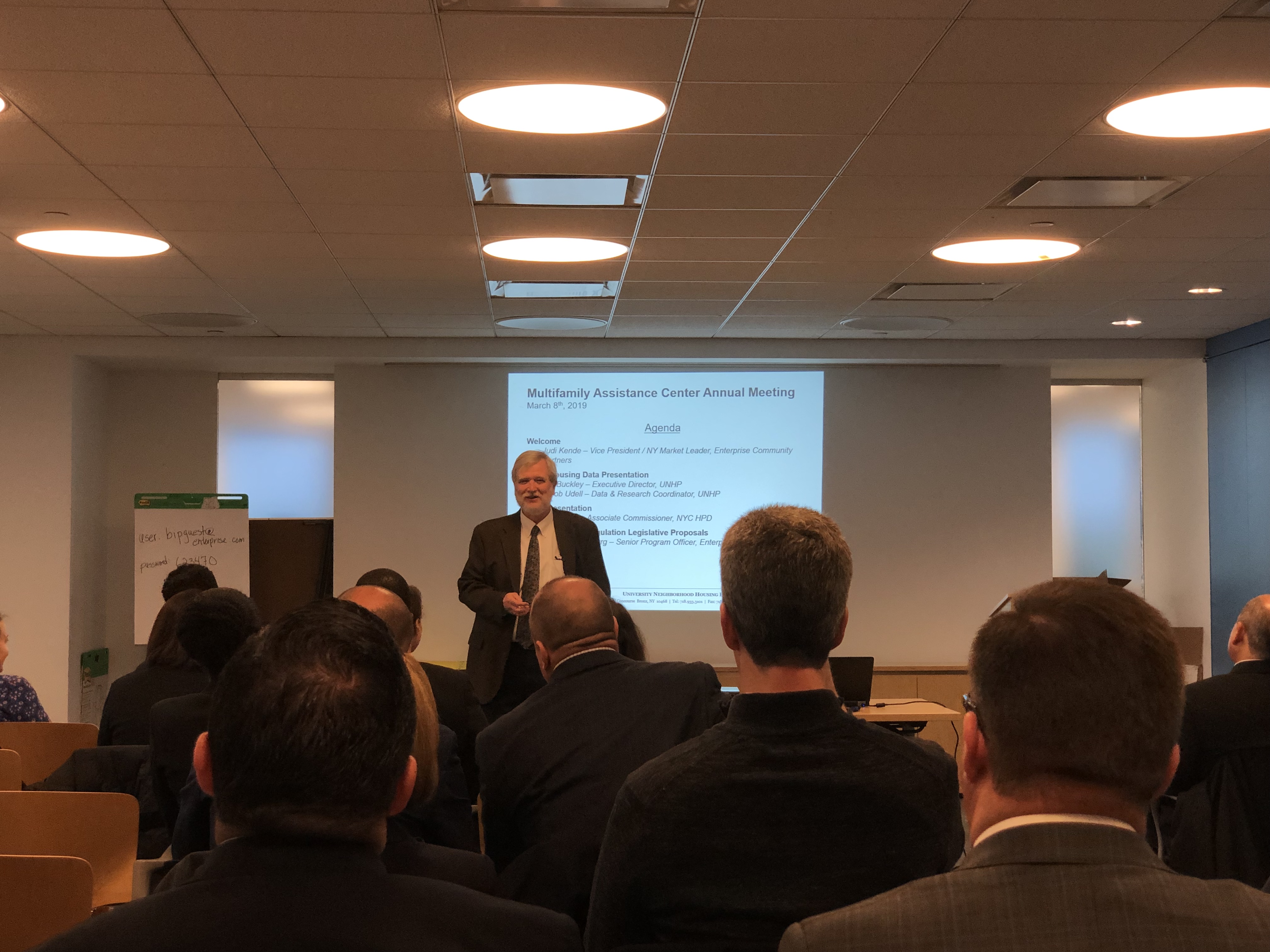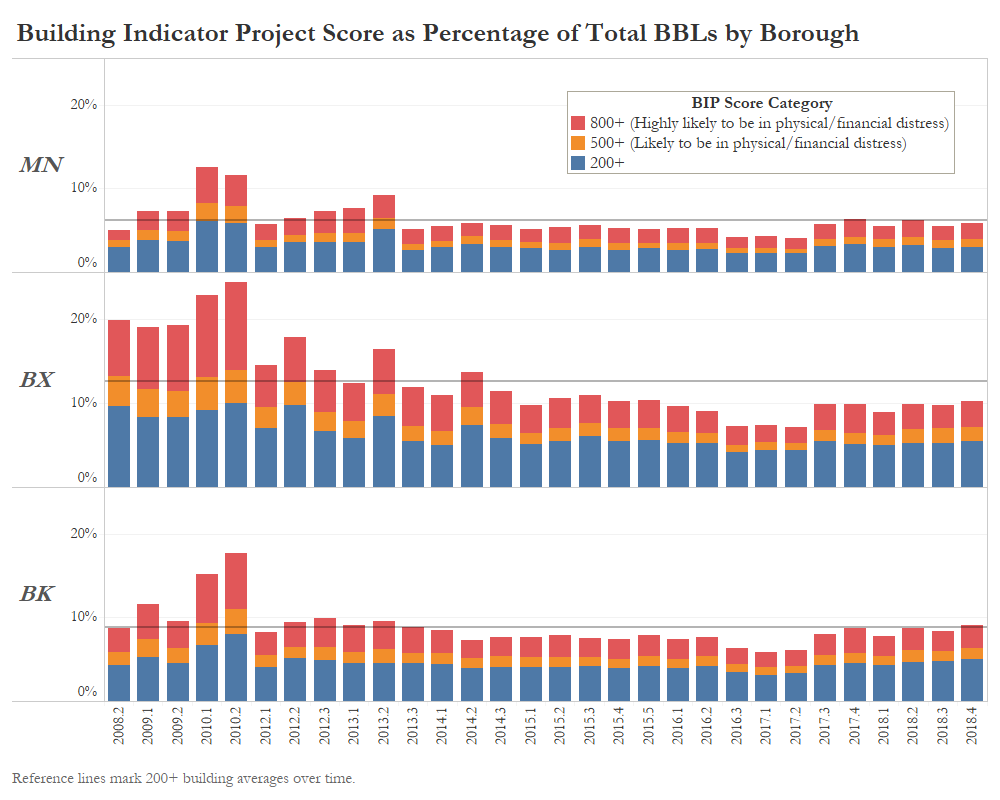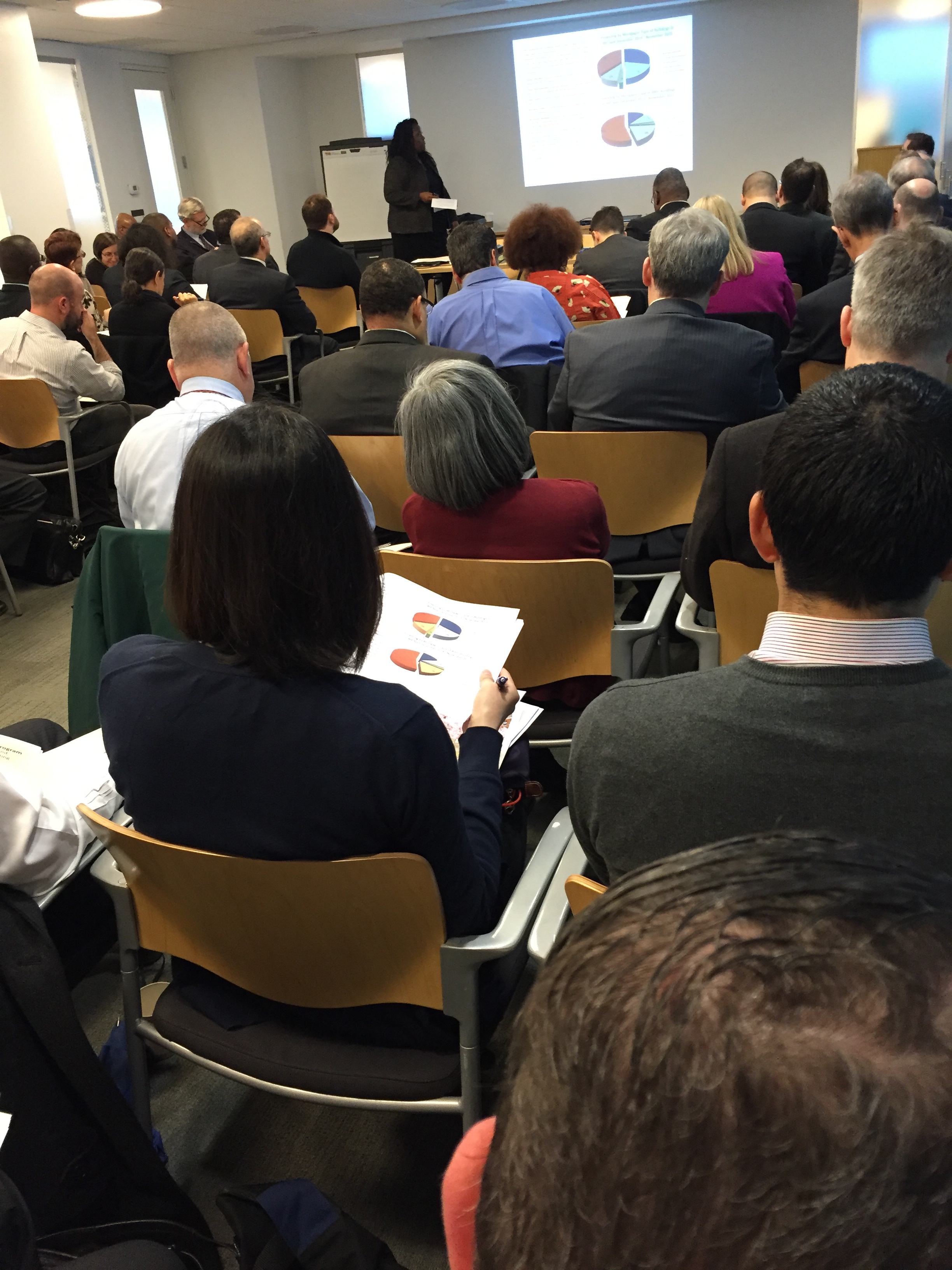UNHP first noticed a significant gap between rising Bronx multifamily sales prices and flat net operating income in 2000. This growing disconnect not only prevented us from assisting tenant groups with purchasing buildings but also rekindled memories of a time in the late 1980s and early 1990s when Freddie Mac over-financed and subsequently foreclosed on a large number of Bronx multifamily properties. In 2003 and 2004, we proactively set out to limit the damage of speculative investment to Bronx properties and neighborhoods through the creation of the Multifamily Research and Action Center and the Building Indicator Project (BIP) database.
The Multifamily Research and Action Center is an effort by UNHP to collaborate with major multifamily lenders, foundations, public agencies, owners, and managers in order to preserve the affordability and improve the living conditions of Bronx multifamily buildings throughout NYC. Data from the Building Indicator Project joined with city, state, and national datasets are used to drive an informed discussion of the Bronx housing market such as trends in building sales prices, operating expenses, evictions, rent burden, and underwriting and servicing criteria.
 Jim Buckley welcoming attendees to the 2019 MFAC Meeting
Jim Buckley welcoming attendees to the 2019 MFAC Meeting
Since 2006, UNHP has held a yearly financial roundtable meeting to discuss housing trends and share data with lenders about buildings in their portfolios. These meetings have been attended by over 30 major lenders, two different HPD Commissioners, and two national housing foundations. To see the materials from our most recent meeting click here.
The Building Indicator Project is a database developed by UNHP to identify NYC multifamily properties in physical and/or financial distress. In its current form, BIP has aggregated more than a decade of data for all 70,000+ rental buildings in NYC, tracking more than 120 data-points for each building. BIP also employs a scoring system, developed in collaboration with financial institutions, advocates, property managers, and researchers in order to identify buildings likely or highly likely to be in distress.
 Percentage of buildings likely or highly likely to be distressed by borough.
Percentage of buildings likely or highly likely to be distressed by borough.
The database is updated quarterly, and used by a wide variety of partners, including 40 community organizations and advocacy groups, 35 financial institutions, and major bank regulators at the state and federal levels. Non-profits use BIP to identify distressed buildings in their catchment areas for organizing and outreach, to build portfolios by landlord or lender, and to conduct analysis to support advocacy. Financial institutions use the data to monitor properties in their lending portfolios and hold their borrowers accountable for building violations or unpaid property charges. Regulatory bodies look at BIP scores for buildings within a bank’s portfolio during Community Reinvestment Act (CRA) examinations, in order to ensure that the loans which receive CRA credit do indeed meet the needs of the community.
UNHP has been compiling BIP data for more than 10 years, during which time NYC housing data has undergone major changes. Recognizing this, UNHP is working to make the entire decade of BIP data available in a flexible format, allowing our partners to analyze and identify trends in multifamily rental housing since 2008.
If you are interested in subscribing to regular releases of BIP data or hearing more about our current work, please contact us at bip@unhp.org.
“UNHP's BIP inspired HPD to create our own measures of financial and physical distress. The light UNHP shines on troubled portfolios of even the strongest banks has been a critical component in the success of our Overleveraged Properties Initiative.”
— Rafael E. Cestero, Former Comissioner, NYC Department of HPD
